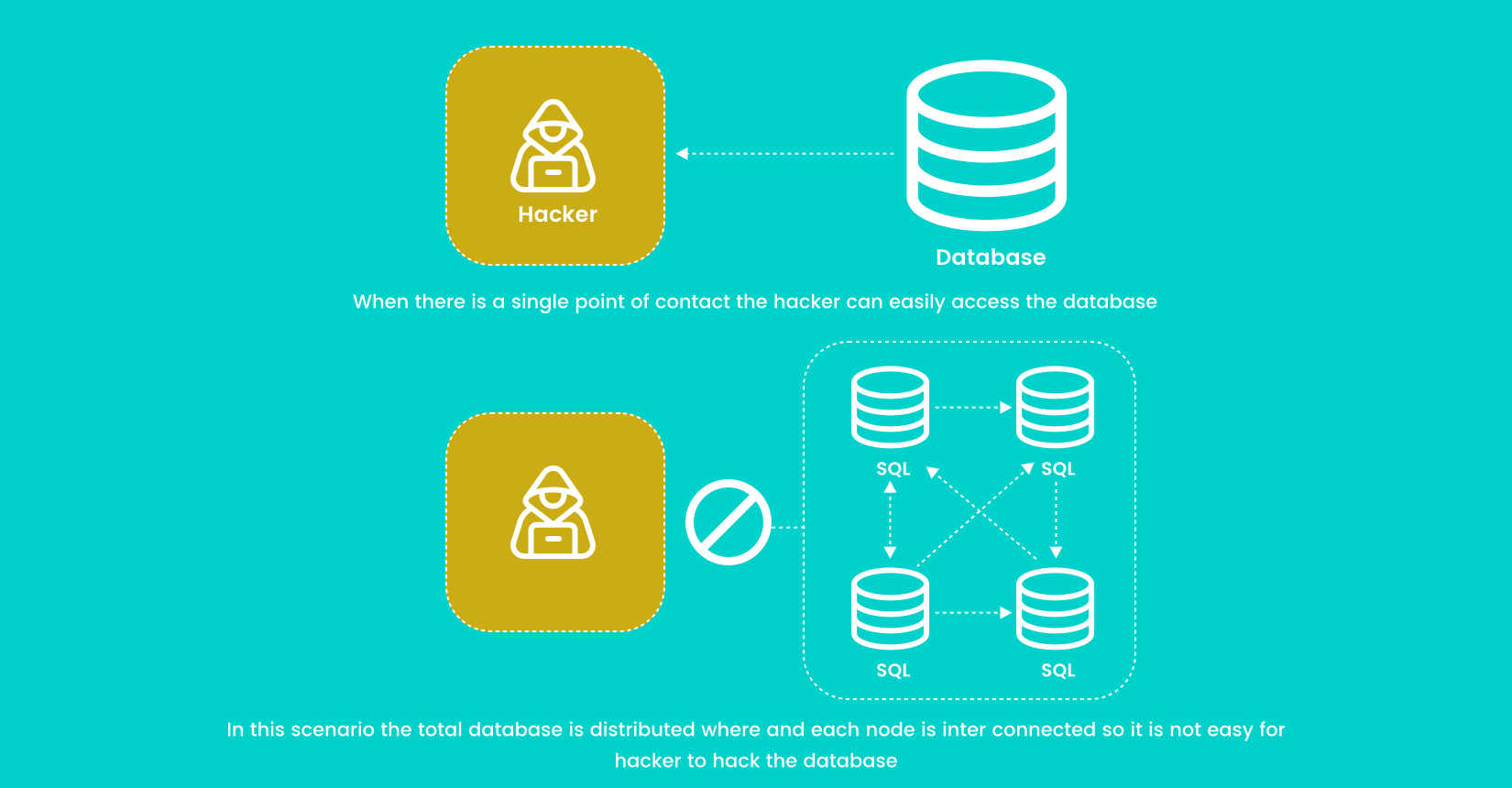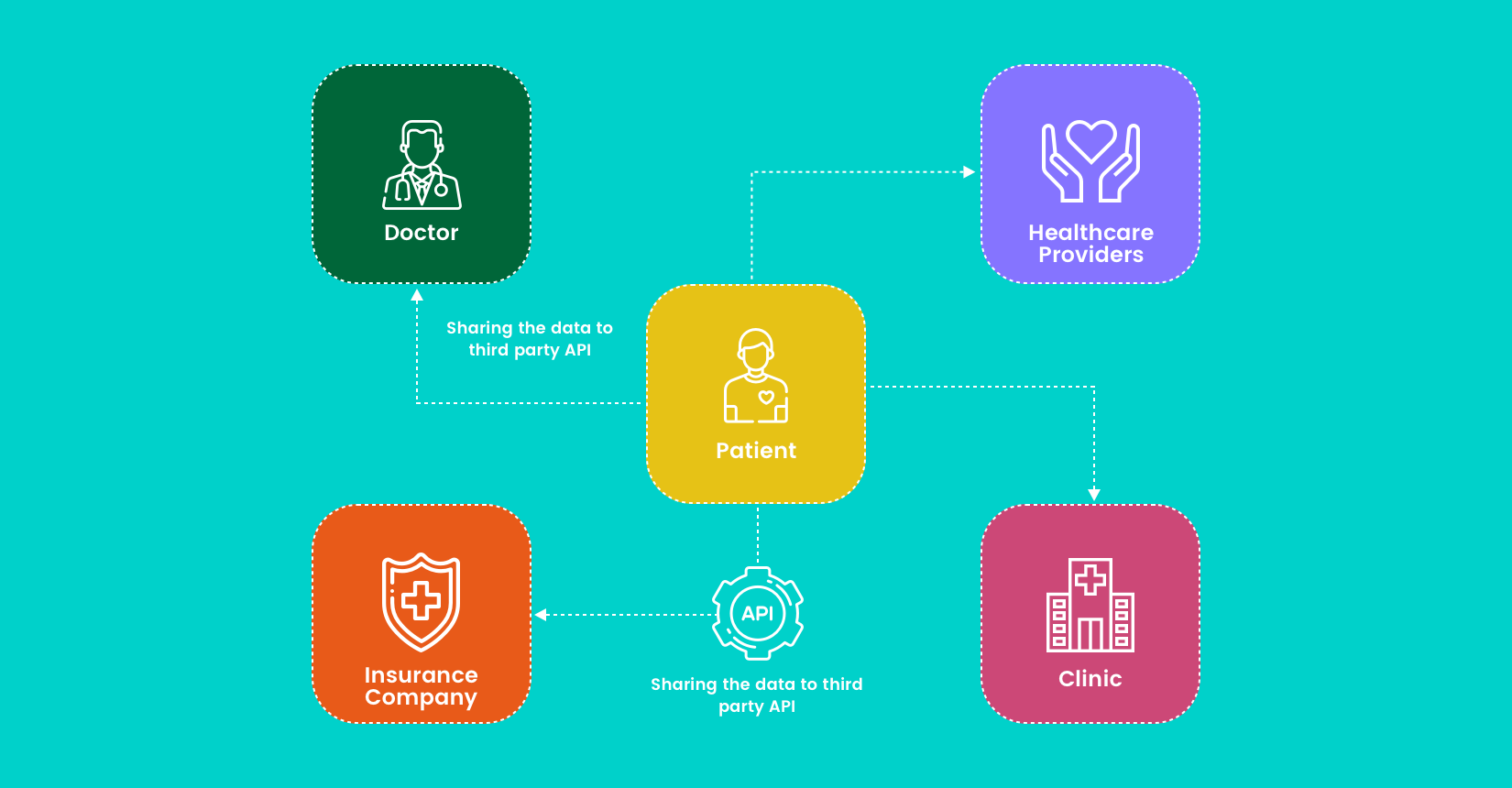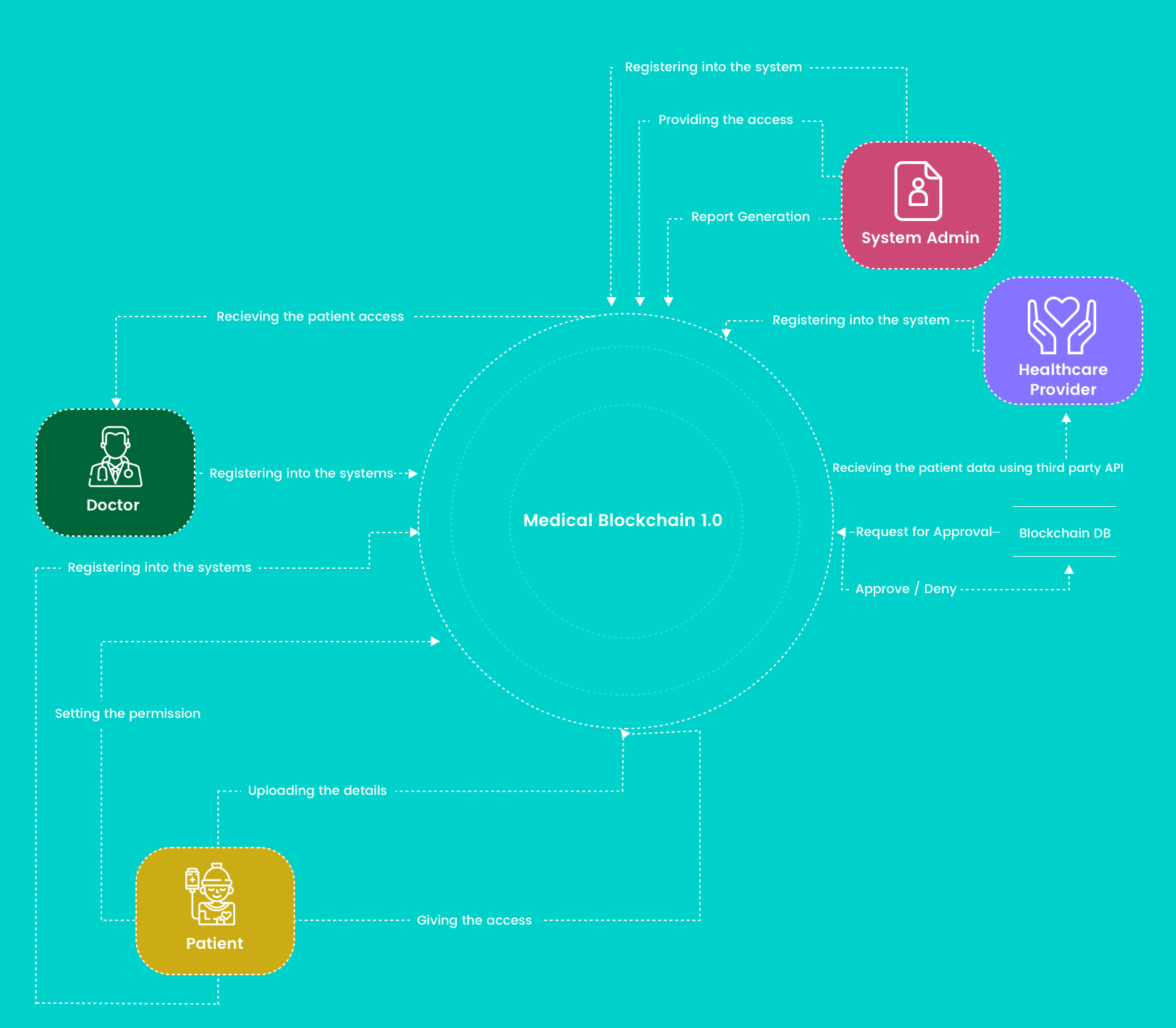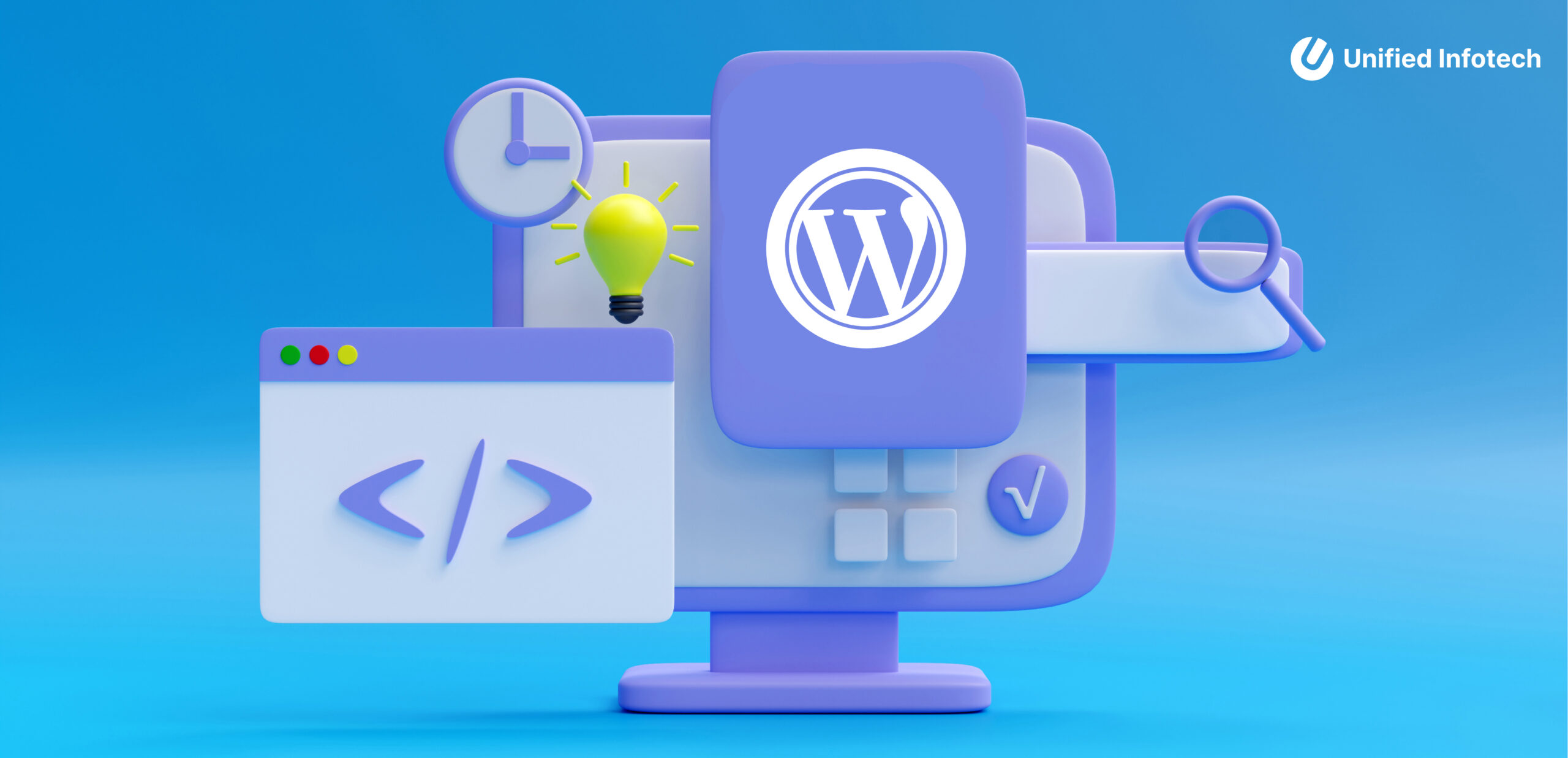
Site Search
Blockchain In Healthcare – How It Can Transform The Industry

Table of contents

Let's talk
Reach out, we'd love to hear from you!
Blockchain in Healthcare – an Emerging Tech
Healthcare segment is one of the critically acclaimed industries in the global arena. As technology has influenced every segment, healthcare is no different. The blockchain is a brainchild of technology. It will transform medical treatment and transaction processes across the globe. It is the mechanism that removes the geographical boundaries and makes effective healthcare services available to the majority of the patients. This aids in proper treatment and remedies. Blockchain has already found its importance in several other sectors such as Fintech, Insurance and many more. Subsequently, in the healthcare segment, it can be very beneficial. It can benefit treatment processes and other associated services. Subsequently, in the medical segment, it can be very beneficial. Blockchain in healthcare can benefit treatment processes and other associated services.
Blockchain – The Concept
The blockchain is the backbone of the most talked about bitcoin digital currency. Its origin is however not very definite. Its beginning can be traced back through a series of a pseudonymous and unidentified person or group to a man called Satoshi Nakamoto. It has already shown its significant popularity and usage in the finance segment. There is a number of businesses which are already utilizing this technology actively. In fact, such businesses are taking up the global marketplace quite rapidly.
The blockchain is a digital ledger of transactions within a business network. There is no single or independent entity controlling this ledger. Therefore, the distributed ledger system makes it easier to create cost-efficient commercial relationships where virtually anything of value that can be tracked and traded without the involvement of a central governing entity. Trust and integrity are established without the dependency of the third party intermediaries. Therefore, it is beneficial in all aspects.
Type of Blockchain Structure
Permission-based Blockchain
Permission-based Blockchain acts as a closed ecosystem. The information related to the recorded history, transactions and such as cannot be accessed or viewed by unauthorized individuals. Centralized organizations can actively use this system. It provides complete control of the network and its related information.
This system can run with the help of specific members of certain fraternities or companies. Only the approved members or specific entities will have the ability to run the nodes on the network. As a result, only these individuals will have access to validate the transaction blocks, reading the entire or partial transaction history or execute the smart contracts. In other words, it is a controlled functioning system.
Characteristics
Diversification of decentralization:
Through this kind of system, the members of the network can come to an opinion regarding the amount of decentralization the network should possess. Private Blockchain allows the choice of the algorithm that one wants to prefer for running the platform. It also ensures the level of governance model they want to introduce in the network and so on. Hierarchy oriented business models generally introduce this system.
Transparency:
The transparency of this type of system depends upon how the organizations want to maintain it.
Governance:
The configuration of the system dictates the governing structure of the network. So, there is no need for a consensus-based mechanism which the network must approve.
Private Blockchain system can be very effective in case of centralized healthcare systems.
Permissionless Blockchain
In this type of system, anyone can join the network and can take part in creating a consensus. The ICO startups which are coming up with tokenomics idea mainly make use of this concept. This is mostly used to power up the digital currencies. Any particular node can be run by the associated parties within this system. They can also implement fresh mining protocols that will aid in the verification of transactions.
In this system, the developers do not imply any kind of boundary to add new things. As a result, most such networks are smart contract based. Hence, the transaction will execute automatically if the criteria are met.
Characteristics
Complete Decentralized Structure:
Mostly the permission fewer networks are decentralized in nature. There are no centralized authorities who can edit the ledger, change any particular protocols, shut down the entire network and so on.
Digitalized tokens:
Mostly all the permission-less network follows the digitalized tokens. The value of those tokens can raise and fall within a stipulated time frame.
Invisible structure:
Mostly all such structures follow an anonymity kind of stuff where the members do not have to submit any of their personal details to create address or submit any kind of transactions.
It can be generally used in the ICO startups that are willing to raise funds through a transparent process.
Why is Blockchain need of the hour?
Symmetric key cryptography:
Symmetric-key algorithms are the ones that use the same cryptographic keys for both the encryption of plaintext and ciphertext description. The key is kept secret while doing the transactions.
Distributed ledger:
The distributed ledger or shared ledger is a platform where all the records are written for blockchain. There is a real-time updating of the distributed ledger. Therefore, no authority is responsible for the network to update this. The network runs on the consensus like POS (Proof of Stake), POW (Proof of Work), and DPOS (Delegated Proof of Stake) etc. Hence, the changes are updated within seconds.
Affirmation of blocks:
The blocks associated with the network are validated by the consensus and then it is added to the network. Validation and verification are necessary for member addition.
Current State of Healthcare Expenditure
Global health care expenditures are expected to continue to boom as spending is projected to increase at an annual rate of 5.4 percent in the period of 2017 to 2022, from USD 7.724 trillion to USD 10.059 trillion. This poses to be a growing segment and many large scale companies are at work. Blockchain in healthcare can be a profitable technology addition to this segment as it reduces complexities associated with many business segments. As a result, the consumers of this segment can benefit from this structure.
Major Concerns in Healthcare
Unwanted corruption of patient records:
Tampering of records is one of the issues faced in the healthcare industry. Usually, the patient records get defaced or altered by the middleman. There are thousands of files associated with a single hospital. So when it comes to several hospitals which are located at different geographical locations then the volume of such files increases to a great extent. These have a higher chance of getting interfered by third parties.
Insurance Issue:
Insurance fraud is another critical factor that is hampering the process flow of the healthcare sector a lot. Many people are dependent on health insurance to bear the expenses of hospitals and nursing homes. But, there is a lot of hassle associated with the identity verification process. The problem from the user perspective is that the insurance sometimes get stuck and it leads their life to unforeseen circumstances.
Data Theft:
It is seen in several circumstances that the data gets stolen from the database of the hospitals. These records and information are easy targets for hackers to steal. They get the key to all the private information of the patient history which can be very challenging not only for a user perspective but also from an authority perspective.

Interconnected Healthcare systems:
If an illegal entity hacks a small healthcare system, there is no proper investigation. However, in most cases, smaller healthcare systems have a link to the larger setups. There is an interconnection among healthcare institutions. So a hacker breaks the code of the smaller system he or she has the key to unlock the larger system. This opens a huge scope for data theft. As a result, the interdependency of the small healthcare systems with the larger setups make the entire system vulnerable to attacks.
Incompetency in cybersecurity:
A lot of people working in healthcare don’t have ample amount of knowledge in cybersecurity. It is a very common situation. Due to inadequate knowledge in this regard, the users who hold top positions in the healthcare industry sometimes put the process in an unorthodox position. Blockchain-based medical records can effectively manage this situation.
Negligent handling of healthcare data:
People belonging to the developing countries tend not to give proper importance to the healthcare data. Authorities do not fully understand the value and prospects of this data type. The extended lifetime of medical records which is generally 20 years makes them a valuable asset for the hackers around the globe.
The legitimacy of the prescription on an international level:
There are many unethical people who pose themselves as doctors. They mislead people while providing an unauthenticated prescription. These fraud people get away as there is no way to verify the originality of their prescription. So, blockchain medical records in healthcare can be useful towards verification of such prescriptions.
Issues in payment procedures:
The patient payments face troubles in the traditional healthcare system. A total of 30 million frauds are detected in the United States. So, the difficulty lies with the verification and authentication processes.
Authenticity in drugs:
It is seen that in the last few decades some dishonest businessmen have put the entire healthcare sector in jeopardy through the manufacture of improper drugs. There is no way to discover whether the drug is authentic or not. This can be a critical error which can lead to many fatalities.
Billing for medical services not provided to the patient:
In this segment, a lot of healthcare institutions add duplicate payments in the patient’s bill as a part of covered services which they didn’t cover at all. Likewise, this type of unethical practices is quite common nowadays that are not traceable easily.
Blockchain Healthcare
The blockchain in healthcare is the technology that has the ability to revolutionize healthcare segment. It can aid in maintaining the privacy of the individuals, enhance security and effectively manage the interoperability of information. It can be instrumental towards building and implementation of a reformed model for health information exchanges (HIE). This system creates and maintains electronic medical records more efficiently. In later years it can be predicted that this technology can provide secure ground for experimentation, investments and proof-of-concept testing.
Blockchain Aid to Healthcare
Getting different healthcare providers on the same platform:
Through this system, various healthcare providers like doctors, pharmacies, and insurance companies will be on the same platform and register themselves in the blockchain healthcare ecosystem. After registration, the independent authority will verify it. After scrutiny and validation, the details will be listed on the distributed ledger of the system. This process generates a particular hash value. Hence, verifying the legitimacy of every entity will become absolutely easy and healthcare blockchain medical records will come into play. Through this usage process in healthcare, there can be a significant reduction in the international fraudulent activity related to verifying the legitimacy of the prescription or a doctor certificate. Likewise, it can eradicate a major loophole in this segment.
Records of the medical history:
Let us explore a use case for healthcare blockchain medical records where all the details related to patients such as prescriptions, medical reports (blood test, MRI results, X-Rays, echocardiograms) will be updated on time to time basis. If any doctor wants to check the details associated some particular patient when they are taking some kind of online consultation they can easily do so without hassle. They can send their all-important consultation with ease and confidence. It will save time and money in a drastic way. So, the best way to determine treatment for a person is to look at and analyze what has worked in the past and for whom it has worked.
Providing the details in a channelized manner:
Let us explore the blockchain in healthcare technology related use cases. We consider this entire system as a permission-based system where the patients can share the intended medical records to the proposed recipients in a channelized manner. Therefore, the users can share the details of their medical record to the relevant recipients such as pharmacies, insurance companies, and doctors. The recipients, on the other hand, will be able to use this vital information for various medical procedures.
This avoids clerical mistakes on a large scale. The patient also can share the right amount of information as per their motive to the organizations and personnel according to the requirement. Through this kind of system, the user can set how much of his or her history can be seen by any other party. Through the third party API, the users will be able to share their record with any insurance or healthcare companies. Thus this scenario shows an important use for blockchain based healthcare processes.

Appropriate recommendation to the patients through the network:
We visualize a system where blockchain medical records will come into play with the help of the PHI (Protected Health Information). In this, the anonymous medical data whether it be a blood test, MRI results, X-Rays, echocardiograms, biopsy reports or any records will be fed into the blockchain based network. This will leverage to help medical professionals quickly diagnose and recommend proper treatment plans for individuals, contribute to medical research. Therefore, these medical records will be helpful to the medical professionals. It aids in prescribing the medication to the patients as per the records which have worked in the past for the other patients.
Blockchain healthcare technology creates a hash for each PHI (Protected Health Information) block, together with a patient ID. Covered entities can receive essential information without revealing a patient’s identity with the usage of an API. This mechanism helps in the effective diagnosis of other patients with the same kind of disease or symptoms. Thus healthcare technology advances to a new horizon.
Sharing the medical record at the time of medical emergency:
Medical Institution can share the patient records with other clinics and other medical institution at the time of emergency with the assistance of this system. We can assume a scenario with two clinics. The authorities will approve access to a precise fraction of medical information. The system does not disclose any personal or confidential information. In other words, The system does not unlock a patient’s entire record. It only shares the information vital in perspective with the emergency medical situation.
Promoting borderless transactions:
A blockchain-based healthcare system is certainly a new technology. This kind of system will promote borderless transactions. The system does have any manual paperwork. Therefore, the users will be able to use the data with the permission-based system under the network. This helps in enhancing the entire system of transactions with minimal errors.
Fewer complexities for insurance companies:
The insurance companies can receive verified patient data with the help of this kind of system. This procedure helps the insurance companies to reduce manual assistance for the verification of the claims and other processes. They can also verify the claims of the users quite easily hassle free.
Easy to detect payment frauds with crypto-based payments:
It is very easy to receive and authenticate the payment data using the crypto payments. Through this procedure, the authorities can verify and validate the payments by the blocks which are convenient. It can reduce fraud occurrences to a massive extent. This system tracks, traces and verifies even the smallest payment details.
Drug Traceability:
One of the main features of blockchain in healthcare is to track the authenticity of the drugs in the healthcare industry. The system adds new transactions to the block. Subsequently, it is immutable for anyone in the ecosystem. This will be helpful to track the product in real time. The manufacturers need to be highly regarded since they will update the record initially. Through this way, every detail of the medicine will be updated on the ledger and the authenticity can be tracked.
Making clinical data accessible to everybody:
For instance, a condition where a particular manufacturer company has done research on a product. It needs to be shared on different geographical locations so as to check the authenticity of the clinical data; a larger data set is required from different health samples. Blockchain-based ledger time stamps the records for maintaining the authenticity of the data. There cannot be any alterations to the data. Hence they can’t change the outcome of the result as well.
This technology would add to the authenticity of the clinical trial. The ledger stores documents as hash values. This will reduce the audit costs to a radical level along with reviewing the documents, frauds etc.
A billion processes simplified:
Through the blockchain in the healthcare facility, one medical institution cannot give fake bills for the services which they did not cover at all or which is not necessary from the patient perspective. All the medical records and the details will be updated on the ledger in a periodical manner making it impossible for duplication or any type of forgery.
Health Management of a Population:
Health Management of a demographic group can be easily managed by the blockchain based healthcare system. Presume there has been a situation where the users of a specific age group are suffering from the possibility of heart disease. Now to confirm this and making particular data shareable, the blockchain provides a reliable solution with authenticity. If it is applied correctly the blockchain will allow best in the class security with data integrity and real-time update with access to the validator nodes across the world.
Therefore, this will allow more people to participate in health studies. Consequently, making data sharing easy across diverse populations. People can approach the target more easily by getting more data sets. Involving the blockchain with artificial intelligence and machine learning will take it to another level.

Compliances
Healthcare system follows a large number of compliances. The data centers which the blockchain technology recommends and promotes must be HIPPA compliant.
HIPPA
The Health Insurance Portability and Accountability Act (HIPAA) set the standard for sensitive patient data protection. Companies that deal with protected health information (PHI) must have a physical, network, appropriate security procedures in place and follow them to guarantee HIPAA Compliance.
Advantages
Secured data:
Each interaction of the medical data is auditable, transparent and secure. Consequently, distributed ledger records each transaction in the system. This positively promotes blockchain within the healthcare system.
Data Control by the User:
Each data is controllable as per the user’s perspective. The users will be in full control of the data sharing process. Hence, the services providers will have access to permitted information.
Smart contract controlled data:
The data which will be used in the system is smart contract controlled data. It implies that the data will only execute if the predefined condition is satisfied.
A computer protocol named the smart contract is planned to digitally assist, confirm, or implement the negotiation or presentation of a contract. They are responsible for the performance of credible transactions without the involvement of third parties. Hence, these transactions can be traced and are irreversible in nature.
Securing medical data history:
The primary concern in working with healthcare data at a patient level is protecting in the personal health information (PHI). The blockchain is predicted to establish a success record in securely managing healthcare data services. Furthermore, it is likely to be considered a preferred transactional process to be used in the system.
The distributed nature of the data:
The Data Use Agreements dictate to business partners how the medical data can be managed, stored, moved and manipulated. It also dictates that PHI is secured in specific locations with access limited to specific individuals or authorities. This depicts who must access the data to perform certain medical activities charted in contractual arrangements. The dispersed nature of data storage in this technology would require a major change in existing practices of data security in healthcare. Therefore, it can be significant in promoting this system in healthcare.
Effective patient identifier:
It is very difficult and tedious to link various electronic databases sourced from different locations in the existing system. Even in the case of healthcare claims from insurance companies, electronic medical records, social services systems, personal monitoring devices, consumer purchasing databases and such like requires perfect identification of the patient. Hence, the blockchain system will bring in uniformity and correlation of such data and verification process. This will aid in reducing errors and increasing efficiency.
Setback
The system can become slow:
Such type of system has reduced speed. The digital ledger updates each transaction in the system. As a result, the system is slow. However, it is not utterly true. The speed depends upon the model used in the process.
Use Cases
Scenario 1
Problem Statement
For example, the scope is to build a proper market place. The users will be able to register with the required information. They will be able to get an entire set of services that includes getting the consultation of certified doctors and getting different services from various service providers present in the ecosystem. As a result, the blockchain based consensus will be able to provide the above-mentioned services.
As per the client requirements, a particular platform will be built with the help of this technology. The nodes of the system reserve all the appropriate medical details of the patients. Consequently, no other individual or institution will have access to the records.
The patients will be able to the in-charge of their own records. Only particular doctors and relatives will be able to view. Subsequently, only these sanctioned individuals will be able to observe and inspect the records. The personnel is able to view the medical information that the system allows.
The system will have a wallet included with it. It would be compatible with several cryptocurrencies. The individuals can use these cryptocurrencies as per requirement. However, one can purchase it through the platform only. The users will be able to do any transaction type associated with the system with a specific token only.
System registered users can deposit the formal proposition of their countries. After that, they will be able to buy the respective crypto token. Also after getting designated services, they can transfer the crypto token with the equivalent fiat of the respective currencies.
A Blockchain Solution to the Problem:
It is a universal system that interconnects various vendors in the ecosystem.
• This platform will support multiple vendor type registration and will contain different service listing types like hospitals, pharmacies, diagnostics, tourism service provider and travel agencies.
• There will be only one coin which will be used in the system and all kinds of transactions will be done through this particular coin. This particular coin can be brought through the system wallet and through pre-listed cryptocurrencies. Above all, it will be exclusive to the platform only.
• This particular system will also provide all kinds of cost analysis and comparative services and will list out the best price of the product which the patient is searching.
Blockchain Usage
The power of blockchain comes to play in the EHR (Electronic Health Record) section. All the patient record will be stored using in this technology and no one can delete any kind of record from the system.
Users Associated with the System
1. System Admin
2. Patient or the End User
3. Vendors
4. Doctors
Role of System Admin
1. Deactivation and reactivation of users.
2. Modification of System Preferences or Settings.
3. Force sending of a new password to a user via email.
4. View Reports or Dashboards.
5. See the total finance details associated with the ecosystem.
6. Addition and management of news.
7. Addition and management of FAQ.
8. CMS management. (Static page management uses this)
9. Observation of Two Factor authentication details.
10. Appointment details view of the doctors in the system.
11. View of the listing of the vendors with the system.
Role of Doctor
1. Registration of the basic information.
2. Alteration of the general information from the “settings” section.
3. Viewing of the patient records under the specific doctor. In this case, the permission of the patient needs to be there to access the medical records.
4. Smart tracking of the scheduled appointments of the respective doctor.
5. Submission of the hospital request.
6. Provision of online consultation to the patients.
7. Providing online medicine prescription to the pharmacies.
Role of Patient
1. Registration of the fundamental information.
2. Updating the family information with any doctor.
3. Viewing the list of physicians in the specific area.
4. Viewing the list of medical centers in the specific area.
5. Ability to schedule any particular appointment.
6. Information related to a specific physician in the area.
7. Ability to schedule any particular appointment with a particular physician.
8. Access to information on all the related topics in the blog section as per their selection at the time of registration.
9. Addition of certain relatives to view medical history.
10. Granting permission to access information to specific individuals.
Role of Vendor
1. The vendors will be able to register into the system and will be able to list the medical equipment and medicines.
2. The vendor can receive the tokens and will be able to transfer the goods to the respected client.
USP of the Project
Not only the technology but also we are also integrating the IBM Watson 500 engine with the system. This will enable the user will get prediction regarding the particular medicine. It will also ensure comparative pricing of the particular product if it is available at a lower rate.
Result
We are on the verge of developing the permission-based blockchain powered market place with unique artificial intelligence quotient.
Scenario 2
Problem Statement
For instance, every client prefers a complete and comprehensive global ecosystem committed to advanced and sophisticated technology and transparency in the form of a global decentralized autonomous organization (DAO). This system should preferably be administered by the token holders of the ecosystem. As per the client, there will be a global ICO (Initial Coin Offering) listing platform where all of them can get listed. There will be a decentralized exchange system which will list all the medical ICO tokens. The traders will be able to trade with those entities. The token listing platform lists all ICOs. Consequently, the DAO will give the rating to those ICOs based on the input they are providing.
An Effective Blockchain Solution to the Problem
We are building the ICO listing platform where all of them will be listed. The main motive of this approach is to operate a worldwide ICO fundraising platform and cryptographic exchange services. We will also provide comprehensive advertising, planning and consulting services to support the ICO projects and start-ups that have entered into cooperation agreements with the system. It is also essential to aid in identification, fostering, growth and development of such and related start-ups. There is a proposition to build a number of meticulous verification standards that enhance the transparency and reliability of this technology and segment as a whole. The focus is to make this technology a safe and pivotal part of industry growth. Consequently, we will be able to actively cooperate with financial, securities, and regulatory agencies around the world.
Through this blockchain system in healthcare, all the ICO will receive a detailed marketing plan based on their input. The marketing plan will be classified as Silver, Gold, and Platinum accordingly.
There is the decentral exchange and it will run on the off chain matching engine. An off-chain matching engine will allow it to benefit from the performance characteristics of the centralized exchanges. User addresses sign and sends orders to the matching engine. Subsequently, they are swiftly and deterministically processed with the help of highly sophisticated and efficient hardware. The matched orders are then signed off-chain and committed back to the user accounts that are on the exchange.
USP of the Project
This would be the first of its kind blockchain system where the healthcare ICOs can list their tokens and the traders can trade with them. The system will aid in channeling provision for the startups. Hence, it is helpful for layout of the effective marketing plans.
Result
Through the blockchain system, the ICOs can promote themselves with top-notch marketing plans. It will also promote blockchain healthcare with first of its decentralized exchange. Subsequently, medical tokens will power the system.
Scenario 3
Problem Statement
The client wants to have a platform where there will be a valuable recommendation regarding the medicine for children that will be helpful towards leading a healthy life. Furthermore, the platform will also recommend the daily routine for children based upon input from their parents. This input can be provided during the registration.
Blockchain Solution to the Problem
We are creating a healthcare platform based on blockchain where the parents will be able to register with their child name and provide necessary details related to health and physic such as gender, height weight, medical conditions etc. A particular hash value stored patient details in the system. With the active usage of Artificial Intelligence, the children will be recommended with a proper diet plan and medical chart. As a result, all the medical reports of the children will be updated in a periodical manner in the system. Additionally, as the on-chain technology is being used so all the records will be version controlled.
Esteemed child professionals around the globe can register in this blockchain based healthcare platform and guardians will be able to take all important consultations from them. Authorities can send the children records safely over the boundaries. So, this entire process of exchange will take place with the approval of validator nodes that lies in the hand of admin.
Result
Hence, with the effective combination of artificial intelligence and permission-based blockchain, it will help in better management of child healthcare system.
Conclusion
Blockchain on the healthcare economy will have an enduring impact. The system ensures the proper handling of customer details. It will also guarantee that the data is never accessible to the third parties who do not have authorized access. Hackers pry on normal hospital websites. This can put the entire system in a total peril. However, with the introduction of the blockchain, this scenario can be changed. But introduction, implementation and active usage of this sophisticated technology will take some time. Blockchain will surely open new doors to make the healthcare industry more successful in the future.


